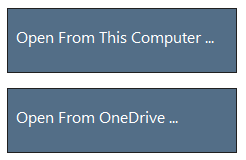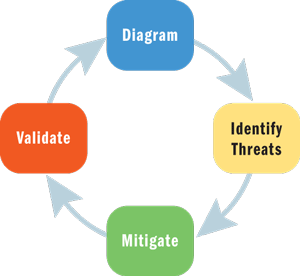
- #Microsoft sdl threat modeling tool download code
- #Microsoft sdl threat modeling tool download windows
The last two options are considered safe values.ĪSP.NET applications must disable tracing and debugging prior to deployment TitleĪSP.NET Debugging Overview, ASP.NET Tracing Overview, How to: Enable Tracing for an ASP.NET Application, How to: Enable Debugging for ASP.NET Applications This is a Chromium function utilizing CSP violation reports to send details to a URI of your choice. The browser will sanitize the page and report the violation. Rather than sanitize the page, when an XSS attack is detected, the browser will prevent rendering of the page
1: Filter enabled If a cross-site scripting attack is detected, in order to stop the attack, the browser will sanitize the page. This response header can have following values: X-XSS-Protection response header configuration controls the browser's cross site script filter. 
Following are examples of inline scripts some JavaScript code Įvent handling attributes of HTML tags (for example, When CSP is enabled on a website, the following features are automatically disabled to mitigate XSS attacks. Scripts loaded from any other site will be rejected. This way, CSP serves as a real-time warning system.Įxample policy: Content-Security-Policy: default-src 'self' script-src 'self' This policy allows scripts to load only from the web application's server and google analytics server.
Real-time attack reporting: If there is an injection attack on a CSP-enabled website, browsers will automatically trigger a notification to an endpoint configured on the webserver. Not all browsers respect this header and going forward CSP will be a standard way to defend against click-jacking Currently defense against click-jacking is achieved by configuring a response header- X-Frame-Options. Defense against click-jacking: click-jacking is an attack technique using which an adversary can frame a genuine website and force users to click on UI elements. This is because the target domain will not be in CSP's allowed list Control over data exfiltration: If any malicious content on a webpage attempts to connect to an external website and steal data, the connection will be aborted by CSP. This exploit will not work since the attacker-controlled domain will not be in CSP's allowed list of domains This exploit will not work due to CSP's Base Restriction-1 Protection against XSS: If a page is vulnerable to XSS, an attacker can exploit it in two ways:. It is an allowed list-based policy - a website can declare a set of trusted domains from which active content such as JavaScript can be loaded.ĬSP provides the following security benefits: CSP is added as an HTTP response header on the web server and is enforced on the client side by browsers. Implement Content Security Policy (CSP), and disable inline JavaScript TitleĪn Introduction to Content Security Policy, Content Security Policy Reference, Security features, Introduction to content security policy, Can I use CSP?Ĭontent Security Policy (CSP) is a defense-in-depth security mechanism, a W3C standard, that enables web application owners to have control on the content embedded in their site. WCF-Information disclosure through metadata. Enable WCF's service throttling feature. Ensure that only trusted origins are allowed if CORS is enabled on Azure storage. Ensure secure management of Azure storage access keys. Ensure that devices have end-point security controls configured as per organizational policies. Ensure that the Cloud Gateway implements a process to keep the connected devices firmware up to date. Ensure that the default login credentials of the field gateway are changed during installation. Encrypt OS and other partitions of IoT Field Gateway with BitLocker. Ensure that only the minimum services/features are enabled on devices. Encrypt OS and other partitions of IoT Device with BitLocker. Ensure that unknown code cannot execute on devices. Ensure that all admin interfaces are secured with strong credentials. Encrypt sections of Web API's configuration files that contain sensitive data. Ensure that only trusted origins are allowed if CORS is enabled on ASP.NET Web API. Configure a Windows Firewall for Database Engine Access.  Remove standard server headers on Windows Azure Web Sites to avoid fingerprinting. Use locally hosted latest versions of JavaScript libraries. Enable ValidateRequest attribute on ASP.NET Pages.
Remove standard server headers on Windows Azure Web Sites to avoid fingerprinting. Use locally hosted latest versions of JavaScript libraries. Enable ValidateRequest attribute on ASP.NET Pages. 
Ensure that only trusted origins are allowed if CORS is enabled on ASP.NET Web Applications. Ensure that authenticated ASP.NET pages incorporate UI Redressing or click-jacking defenses. Access third-party JavaScripts from trusted sources only. ASP.NET applications must disable tracing and debugging prior to deployment. Implement Content Security Policy (CSP), and disable inline JavaScript.







 0 kommentar(er)
0 kommentar(er)
